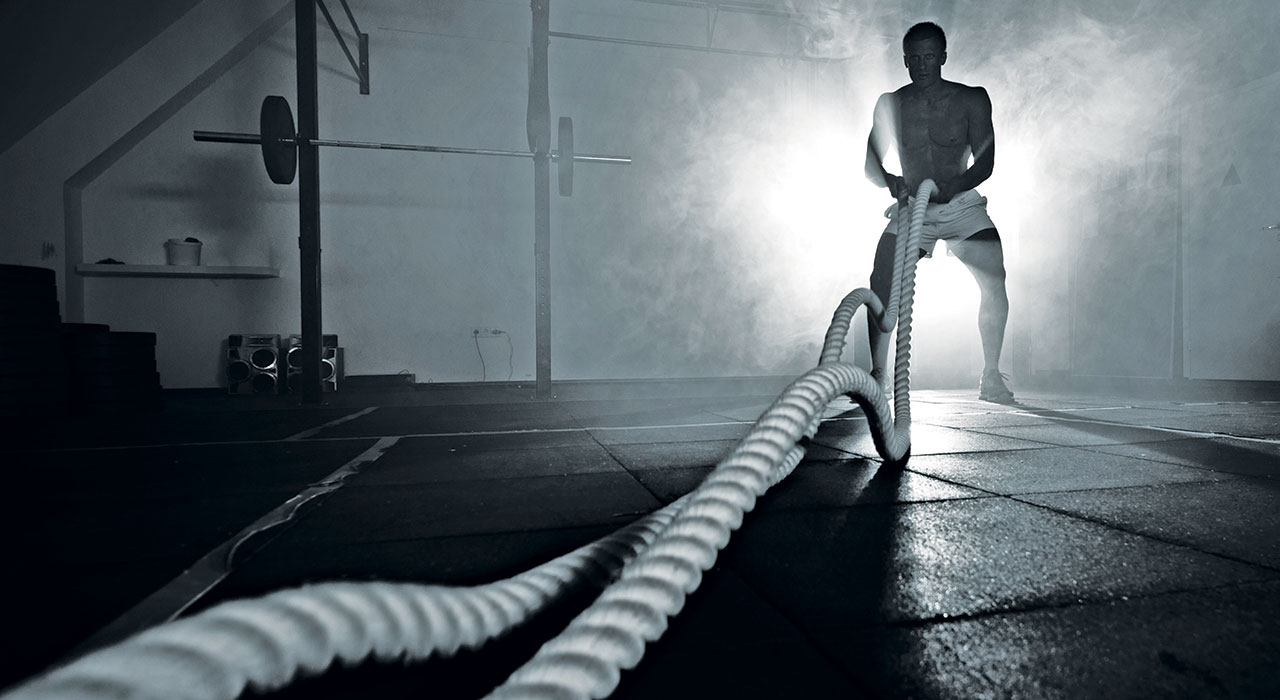Creating the right training conditions is something few athletes consider, but get it right and it can create serious improvements.
Many people see athletes at the pinnacle of success, but they don’t see the years of hard work that came before. It’s the daily training that is paramount to becoming a high-performing athlete and this means that the training environment – both mentally and physically – is key to one’s overall success. It can help provide the motivation to stay committed to ongoing success. Here’s how to master your training environment.
The Inner Space
Outline your goals and be sure they are tangible and measurable. You want a way to measure progress after all your time spent in the gym. Also, be sure your list of goals is readily available at all times. Looking at them before or during training is an essential mental cue to stick with the program when it becomes hard and uncomfortable. It doesn’t matter if that’s between sets or exercises, but having them to hand is crucial to maintain the required level of intensity that forges results. Whether it’s as permanent as a tattooed mantra on your wrist or a transient note on your smart phone – reminding yourself of your goals will help you realize them easier.
It is not only important to have your goals outlined, but understand why you want to achieve those goals. In other words, why are you doing this? Or why do you want to do this? Similar to the goals themselves, your reasons why provides the motivation to endure each session.
You also need confidence and belief in both yourself and the program. You need to have belief that you will succeed, but know that success only comes if you do not let up or become complacent. So, it’s a specific level of confidence and hard work that breeds relentless success. Your mindset and how you view training affects your body language, performance and even hormone levels. This embodiment of the warrior spirit is one the most beautiful adaptations to a training program: soft athletes become hard, weak athletes become strong, and scared athletes become brave. And these results don’t end in the gym; they spread to all aspects of your life creating a more resilient and accomplished individual. This all starts with reminding yourself what your goals are far more often than you might imagine.
The Outer Space
Creating a harsh training environment is one mechanism to cultivate mental toughness but also results. Harsh training means bringing intensity to the session: work hard, work fast, and be aggressive. Go faster than you are comfortable with and skip the water breaks. Train in conditions that force you to get up early, work out in the cold or heat, late at night, or with different equipment.
“The worst thing that could happen to a fighter is that he becomes civilized”
This quote is paraphrased from the movie Rocky III, where Mickey (Rocky’s trainer) is talking about finding the hunger, desperation, and sense of urgency needed to succeed in training. Rocky created this harsh environment in many different ways: boxing meat in a meat locker, lifting rocks in a hot barn, or running up a mountain in the Siberian wilderness. When we look at the basic components of Rocky’s training, it is not so atypical. Essentially, there is footwork, lifting, and conditioning. But, what is different is that the niceties are gone. Early in the morning? No problem. Work out in the heat or freezing cold? No problem. A lack of nice equipment? Good. Get comfortable being uncomfortable. The mental fortitude you develop will translate into training, work ethic, and results. This means that training in a nicely air-conditioned gym is good, but don’t get too comfortable because it will make you soft and civilized. You need to brave the elements often and to do that you should seek out opportunities to shock your system and do the things that you’re scared of. In short, if you don’t want to do it, that means you really have to do it.
Another great aspect of creating the right training environment is having a training partner to push you through these tough moments. Pick a person of a similar size and strength or even just someone with a similar goal or drive. A buddy can keep you accountable for showing up and working hard. In many cases, having another person with you simply switches the perception from something viewed as painful and miserable to something fun and exciting. You’ll find a joint sense of achievement after doing something really hard and that’s what brings out the best in your performance each week. It’s the true key to progression because you can always outperform your biggest competitor – yourself.







